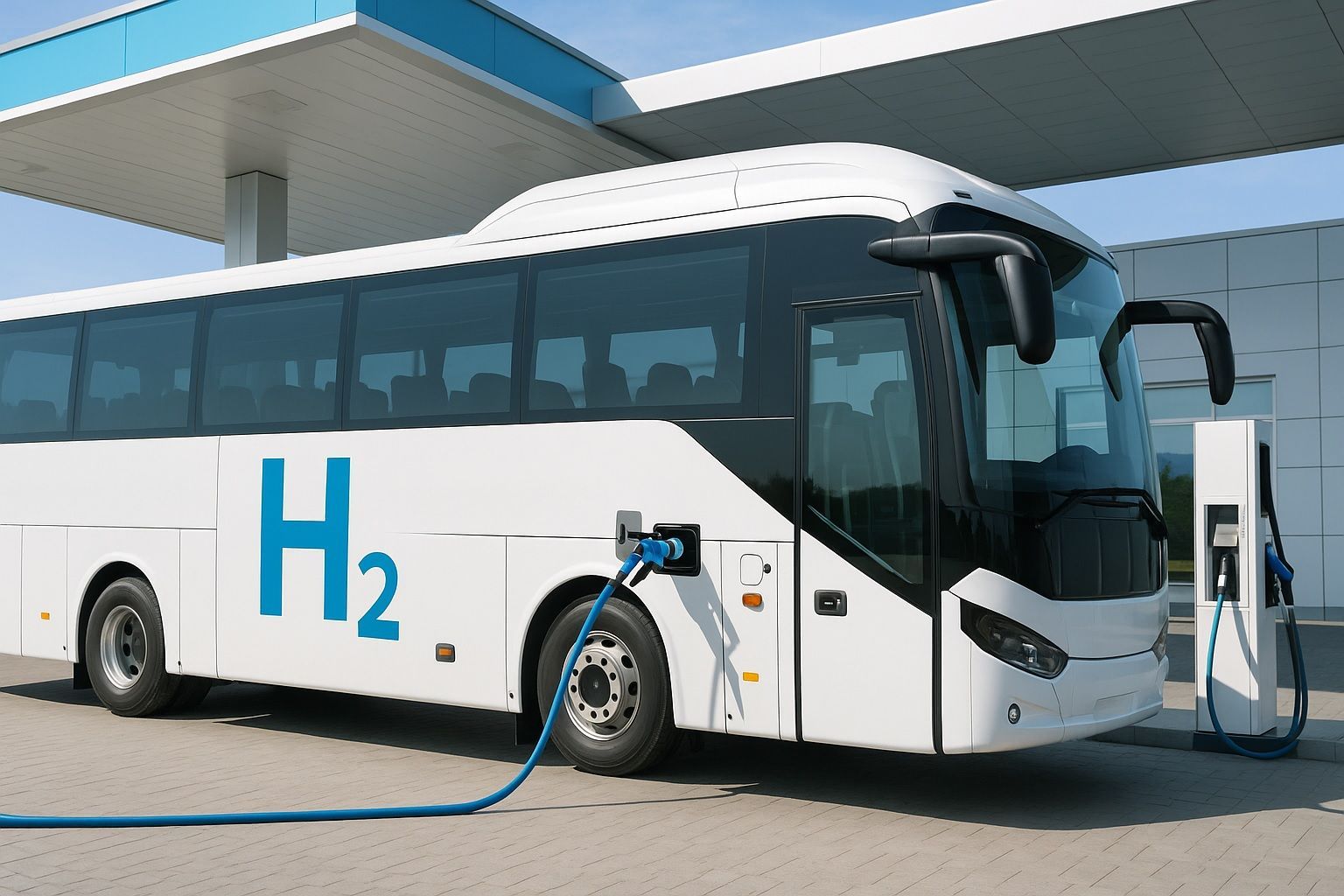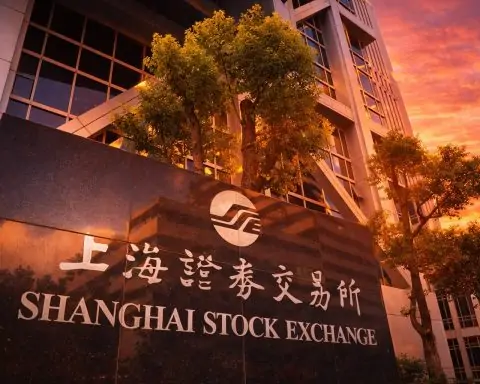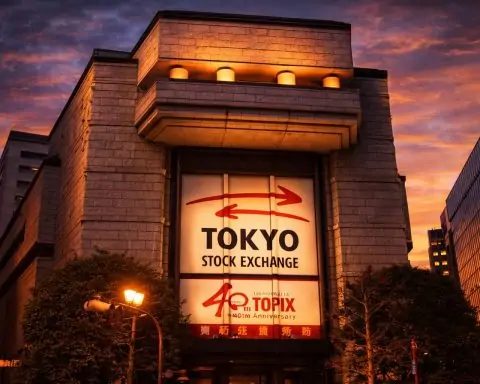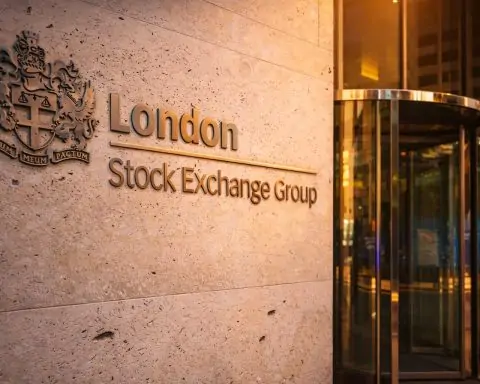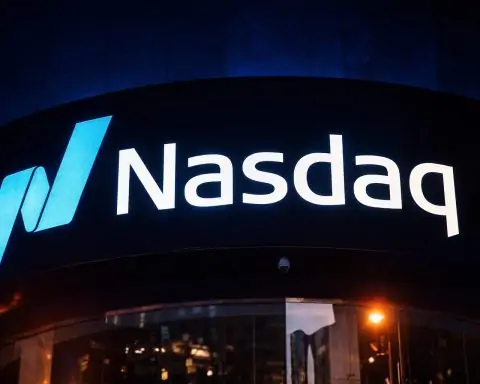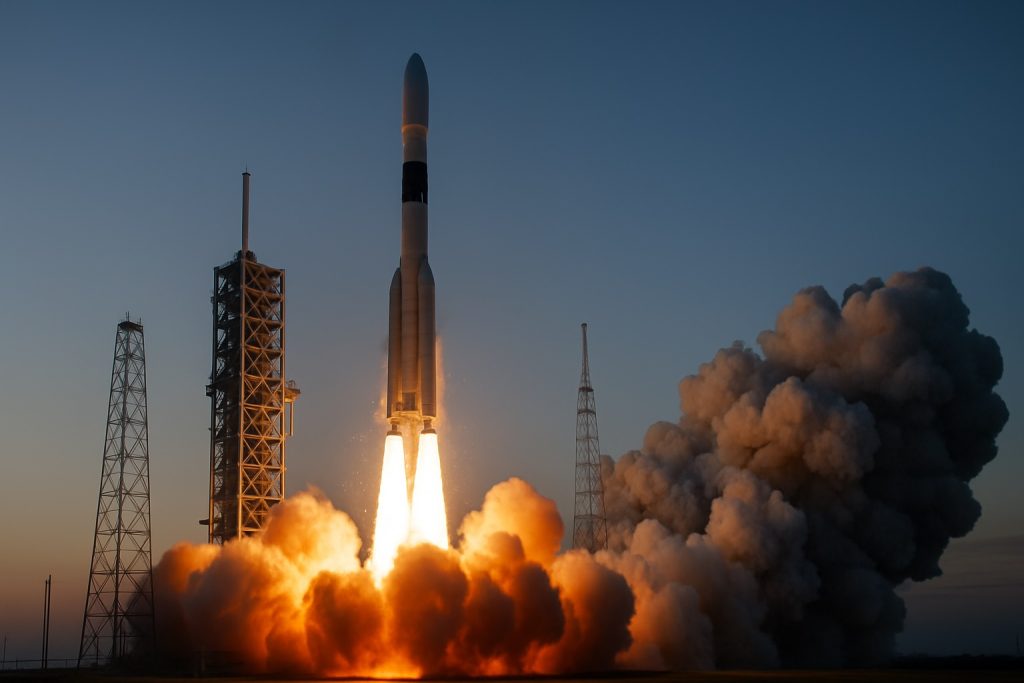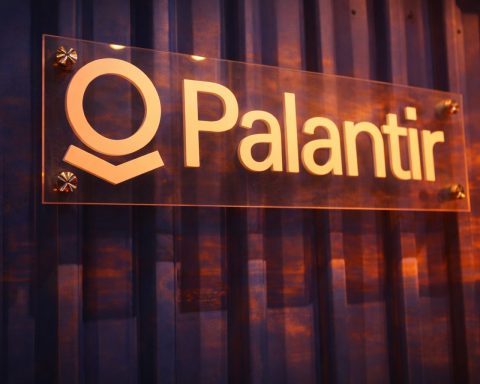- South Korea’s Hanyang University researchers developed a boron-doped cobalt phosphide catalyst that halves hydrogen fuel cost, remains stable for over 100 hours, and outperforms platinum and iridium electrodes.
- Sweden’s Linköping University created a triple-layer photoelectrode (cubic silicon carbide, cobalt oxide, nickel hydroxide) that produced eight times more hydrogen than silicon carbide alone and aims for 10% solar-to-hydrogen efficiency within 5–10 years.
- A Chinese team from Tianjin University demonstrated PEM electrolyzers that can use ordinary impure water with a Brønsted-acid MoO3-x additive to create an acidic microenvironment, maintaining performance over 3,000 hours.
- Australia’s CSIRO unveiled a beam-down solar thermal reactor that uses heliostat mirrors and doped ceria to split water thermochemically with sunlight alone, potentially delivering hydrogen at a lower cost per kg than electrolyzers.
- Europe saw major retrenchments and consolidations: Statkraft halted new renewable hydrogen projects, BP withdrew from the 250 MW H2-Fifty project, HyCC launched H2Next for 25,000 tonnes/year by 2030, and Honeywell agreed to buy Johnson Matthey’s Catalyst Technologies for £1.8 billion.
- ACWA Power’s Uzbekistan green hydrogen pilot came online in late June 2025 with a capacity of 3,000 tonnes per year as part of an US$88 million two-phase investment to feed a new ammonia facility.
- Plug Power expanded its global role with a 2 GW electrolyzer deal in Uzbekistan and a separate 3 GW supply for Allied Green Ammonia’s Australian project, totaling 5 GW across two continents.
- The European Union launched its Hydrogen Mechanism matchmaking platform on July 2, 2025, to connect producers and consumers, with the first demand–supply matching round in September 2025, following a €992 million subsidy round for 15 projects to produce 2.2 million tonnes/year over 10 years.
- In the United States, lawmakers extended the 45V clean hydrogen production tax credit to 2027 (up to $3 per kg), while the DOE advanced an $8 billion Regional Hydrogen Hubs program and California’s ARCHES hub received up to $1.2 billion.
- Gold Hydrogen Australia attracted AU$14.5 million from Toyota, Mitsubishi, and ENEOS to explore natural hydrogen and helium resources in South Australia.
July 2025 – The past two months have seen a surge of activity in clean hydrogen technology worldwide. From scientific breakthroughs that slash production costs, to industry investments and partnerships scaling up green and blue hydrogen, and a wave of government initiatives, the clean hydrogen sector is gathering momentum. Below is a detailed report on key developments in June and July 2025, with insights from experts on what these mean for the future of energy.
Latest Scientific Breakthroughs in Hydrogen (June–July 2025)
- Game-Changing Catalyst Halves Hydrogen Fuel Cost (South Korea) – Researchers at Hanyang University (South Korea) unveiled a boron-doped cobalt phosphide catalyst that dramatically improves water-splitting efficiency [1]. By fine-tuning boron and phosphorus content in cobalt phosphide nanosheets, the team achieved exceptional performance in both hydrogen and oxygen evolution reactions [2]. “These materials have better performance and lower cost than conventional electrocatalysts, making them suitable for large-scale hydrogen production,” said Prof. Seunghyun Lee, lead author of the study [3]. The catalyst ran stably for over 100 hours and even outperformed state-of-the-art platinum and iridium-based electrodes [4]. (ScienceDaily, June 20, 2025)
- Sunlight-Splitting “Triple Layer” Material Boosts Green Hydrogen Output (Sweden) – In Sweden, Linköping University scientists developed a triple-layer photoelectrode that can efficiently produce hydrogen directly from sunlight [5] [6]. The device sandwiches cubic silicon carbide, cobalt oxide, and a nickel hydroxide catalyst, a design that enhanced charge separation and yielded eight times more hydrogen than using silicon carbide alone [7]. This advance in photochemical water splitting could pave the way for solar-powered hydrogen production in sectors like heavy transport that batteries can’t easily decarbonize [8] [9]. Researchers aim to reach 10% solar-to-hydrogen efficiency within 5–10 years – a threshold for commercial viability [10]. (Open Access Government, June 24, 2025)
- “Dirty Water” Breakthrough: PEM Electrolyzers Run on Tap Water (China) – A Chinese research team (Tianjin University and others) announced a breakthrough that allows proton exchange membrane (PEM) electrolyzers to produce hydrogen using ordinary impure water instead of ultra-pure water [11] [12]. The key is creating an acidic microenvironment in the electrolyzer’s cathode by adding a Brønsted acid material (molybdenum oxide, MoO<sub>3-x</sub>) to the catalyst [13]. This innovation prevented catalyst poisoning by impurities and maintained performance over 3,000 hours on tap water, matching the output of systems using deionized water [14] [15]. “PEM electrolyzers typically use ultrapure water as a feedstock because trace contaminants…can cause their failure,” the researchers noted, highlighting the importance of this cost-cutting development [16]. By eliminating expensive water purification, the technique could significantly lower green hydrogen costs and enable deployment in water-scarce regions [17] [18]. (Caliber.Az, June 28, 2025; Sustainability Times, July 2, 2025)
- Solar Reactor “Crushes” Electrolysis Costs (Australia) – Australia’s national science agency CSIRO unveiled a “beam-down” solar thermal reactor that produces green hydrogen more efficiently and cheaply than traditional electrolysis [19]. The system uses an array of heliostat mirrors to concentrate sunlight onto a tower, heating a bed of doped ceria (cerium oxide) which then splits water via a two-step thermochemical cycle [20] [21]. This approach, demonstrated at CSIRO’s Newcastle Energy Centre, requires no electricity – sunlight drives the reaction – potentially offering green hydrogen at lower cost per kg than using power-hungry electrolyzers. CSIRO’s doped ceria material releases oxygen at relatively low temperatures, making the hydrogen production process more efficient [22]. This breakthrough “marks a significant milestone” in clean energy, positioning sun-rich countries like Australia to produce hydrogen fuel for hard-to-electrify sectors (e.g. steel, chemicals, aviation) at competitive costs [23] [24]. (Sustainability Times, June 26, 2025)
Industry News: Major Investments, Projects & Partnerships
- Europe’s Hydrogen Industry Recalibrates – Several high-profile strategic shifts occurred in Europe. Norway’s Statkraft, one of Europe’s largest renewable power producers, announced it will stop developing new renewable hydrogen projects globally, citing high costs and market uncertainty [25]. It even canceled a planned 40 MW electrolyzer order in Norway after failing to find a viable business model under current conditions [26]. Meanwhile, BP withdrew from the 250 MW “H2-Fifty” green hydrogen project in the Netherlands as part of refocusing on core oil/gas assets [27]. In response, Dutch partner HyCC launched a new project (“H2Next”) of similar scale, aiming for 25,000 tonnes/year of green hydrogen with a 2030 startup target [28]. These retrenchments reflect a more cautious phase in Europe’s hydrogen market, as companies prioritize projects with clearer returns. However, there were signs of consolidation and confidence in low-carbon hydrogen: U.S. conglomerate Honeywell agreed to acquire Johnson Matthey’s Catalyst Technologies business for £1.8 billion, gaining critical blue-hydrogen and carbon-capture process technology (like JM’s Low Carbon Hydrogen process used in UK projects) [29]. Johnson Matthey will refocus on electrolyzer membranes and fuel cells, while Honeywell’s CEO lauded the deal as bolstering their sustainable fuels portfolio. (Westwood Global Energy Group – Hydrogen Compass, June 17, 2025)
- Big Oil and Gas Invest in “Blue” Hydrogen – Oil & gas players continued to back blue hydrogen (from fossil fuels with carbon capture). Notably, Honeywell’s above purchase signals continued interest in CCS-based hydrogen technology for refineries and industry [30]. In the Middle East and Central Asia, Saudi Arabia’s ACWA Power revealed that its pilot green hydrogen project in Uzbekistan came online in late June, with a capacity of 3,000 tonnes of H<sub>2</sub> per year [31]. This project – Central Asia’s first large-scale hydrogen plant – will feed a new ammonia production facility and is part of an US$88 million two-phase investment to put Uzbekistan on the “global green hydrogen map,” according to ACWA’s regional president [32] [33]. On the fossil side, some projects faced headwinds: the IEA noted that Air Products pulled out of a major U.S. blue hydrogen complex (Louisiana, 600,000 t/yr) pending firm offtake agreements, illustrating the dependency of blue H<sub>2</sub> economics on carbon policies and contracts [34]. (Hydrogen Central, June 19, 2025; IEA report via Eurometal, June 6, 2025)
- Green Hydrogen Mega-Projects and Alliances – Several multi-gigawatt green hydrogen projects advanced with international partnerships. Plug Power (USA) expanded its collaboration with Allied Green Ammonia by signing a new 2 GW electrolyzer deal in Uzbekistan [35], on top of a 3 GW electrolyzer supply for Allied’s planned green ammonia plant in Australia [36] [37]. The Uzbekistan project (a government-backed $5.5 billion sustainable fuels complex producing green ammonia, sustainable jet fuel and diesel) cements Plug Power’s position as a preferred electrolyzer provider for global decarbonization initiatives [38] [39]. “With a 5 GW partnership now spanning two continents, this is a defining example of our ability to deliver for customers building the future of energy,” said Plug CEO Andy Marsh [40]. In another East-West tie-up, Gold Hydrogen Ltd. of Australia secured a AU$14.5 million investment from Japanese giants Toyota and Mitsubishi, and oil major ENEOS, to explore natural (“gold”) hydrogen and helium in South Australia (as reported July 3, 2025). This underscores growing interest in naturally occurring hydrogen reservoirs as a potential low-carbon resource. Furthermore, Canada’s Charbone Hydrogen announced a partnership to design a modular green hydrogen plant in Malaysia – the Quebec-based firm will advise a Malaysian group on a flagship production facility using its scalable model [41] [42]. Charbone’s CEO noted the deal validates their approach and “marks a significant milestone in…accelerate the adoption of green hydrogen in Malaysia and the wider Asia-Pacific region” [43] [44]. (Plug Power press release, June 9, 2025; Investing News/TheNewsWire, June 25, 2025)
- Fuel Cells and Mobility – On the end-use side, hydrogen mobility saw steady progress. Fuel cell vehicle manufacturers and suppliers reported scaling up production. For example, China’s FTXT Energy showcased a 255 kW truck fuel cell engine at an industry expo in Shanghai and ramped up orders for hundreds of fuel cell systems as the domestic market grows (targeting 100,000 fuel cell vehicles annually by 2025) [45] [46]. Major automotive joint ventures in China (Toyota/FAW/Dongfeng, etc.) are completing new fuel cell factories to begin production, reflecting optimism in hydrogen transit for buses and heavy trucks [47]. Similarly, Europe’s Solaris Bus appointed a new CEO to scale its hydrogen bus business (July 2025) and other vehicle OEMs continued rollouts of hydrogen models. These developments, while incremental, indicate that alongside hydrogen production, demand in transport is also being cultivated. (China Daily, July 10, 2025)
Government & Regulatory Updates (June–July 2025)
- European Union: Hydrogen Bank and Matchmaking – The EU ramped up support for renewable hydrogen with both funding and market-building mechanisms. In late May, the European Hydrogen Bank’s second auction awarded €992 million in subsidies to 15 projects across 5 countries, aimed at producing 2.2 million tonnes of green hydrogen over 10 years [48]. Building on that, the European Commission launched a “Hydrogen Mechanism” on July 2, 2025 – essentially a matchmaking digital platform to connect hydrogen producers and consumers across Europe [49]. This “hydrogen matchmaking” platform will collect and publish data on supply offers and demand bids for renewable and low-carbon H<sub>2</sub> (and derivatives like ammonia and e-fuels) and facilitate their pairing [50]. The first demand-supply matching round is set for September 2025. EU Energy Commissioner Kadri Simson said this tool will increase market transparency and help kick-start an EU-wide hydrogen market by linking European buyers with both domestic and international suppliers under a level playing field. Additionally, the EU approved national aid schemes (e.g. Spain’s €400 million program) to bolster hydrogen projects alongside these auctions [51]. These moves underscore the EU’s commitment to hit its 2030 target of 10 million tonnes/year of domestic renewable hydrogen and another 10 million tonnes imported.
- United States: Tax Credit Boosts and Hub Funding – In Washington, lawmakers unexpectedly extended the 45V clean hydrogen production tax credit timeframe, providing a boost to project developers. On June 30, 2025, the U.S. Senate passed a budget bill amendment moving the start-of-construction deadline for hydrogen tax credit eligibility from January 1, 2026 to December 31, 2027 [52]. This two-year extension means new H<sub>2</sub> projects can qualify for the lucrative credit (up to $3 per kg of clean H<sub>2</sub>) through 2027, buying the industry more time to get projects off the ground [53]. The policy reversal came after an earlier proposal to curtail the credit sparked concern; industry groups like the Fuel Cell & Hydrogen Energy Association lobbied hard, arguing the extra time is crucial to realize planned investments. Simultaneously, the U.S. Department of Energy advanced its $8 billion Regional Hydrogen Hubs program. In mid-July, officials in California announced the formal launch of the state’s hydrogen hub: DOE signed a cooperative agreement to provide up to $1.2 billion for California’s ARCHES hub, leveraging a total $12.6 billion public-private investment to build a network of renewable hydrogen projects [54] [55]. And in the Midwest, the governors of Illinois, Indiana, and Michigan jointly welcomed a $1 billion federal grant for a regional clean hydrogen hub centered on their states [56]. These hubs – focused on using hydrogen in power generation, transportation, and heavy industries – are expected to come online later this decade and were a cornerstone of the 2021 Bipartisan Infrastructure Law. “With clean energy innovation, British Columbians are leading Canada into the hydrogen economy. This investment supports good jobs, lower emissions, and a stronger economy built for the future,” said Canada’s Pacific Economic Development Minister Gregor Robertson as Canada, too, invested in hydrogen growth [57]. (In early June, Canada announced funding to help British Columbia’s hydrogen and fuel cell firms expand exports [58] [59], and Ontario rolled out a new Hydrogen Innovation Fund and proposed hydrogen pipeline regulations to spur provincial projects [60] [61].)
- Asia & Others: National Strategies and Initiatives – Governments in Asia continued implementing ambitious hydrogen strategies. China’s hydrogen roadmap, released by the National Energy Administration, reportedly set a 2025 production target of 100,000–200,000 tons of green H<sub>2</sub> per year – a goal that industry data suggests has already been surpassed by mid-2025 due to rapid project development [62]. Japan and South Korea, pioneers in hydrogen, hosted trade missions and pilots during this period: e.g. Japan accelerated work on its Green Innovation Fund projects for fuel cell trucks and began testing a hydrogen supply chain with Australia. In Australia, beyond the CSIRO breakthrough mentioned, the government opened grant applications for its AUD 2 billion Hydrogen Headstart program (announced in May) to underwrite large-scale H<sub>2</sub> projects. India approved a $2.3 billion incentive scheme earlier in 2025 and in June saw global firms pledge investment in its nascent hydrogen hubs. And in the Middle East, the UAE and Saudi Arabia used forums like the MENA Climate Week to pitch their upcoming green and blue hydrogen export projects (Neom, Masdar, etc.), often emphasizing financing models. Across the board, a common theme is governments aligning policy support, funding, and regulatory frameworks to accelerate hydrogen deployment – seen as key to meeting climate targets and capturing new energy markets.
Expert Commentary and Market Outlook
Energy experts and market analysts provided context to these developments, striking a balance between optimism and caution. The International Energy Agency (IEA) reported that global investment in low-emission hydrogen is set to jump ~70% in 2025 to almost $8 billion, despite some high-profile project delays [63]. Hydrogen investment surged 60% in 2024 and is accelerating in 2025 as projects that reached final investment decisions (FIDs) move into construction [64]. “Some hydrogen projects have been cancelled or delayed in the past 12 months, but there remains a pipeline of approved projects that requires around $8 billion of investment in 2025, almost double the level seen in 2024,” the IEA noted in its World Energy Investment 2025 report [65]. This pipeline, if realized, would expand global hydrogen production capacity fifteen-fold by 2035 (to ~7.5 million tons/year) [66] [67]. However, the IEA also warned that today’s economics are challenging: as of mid-2025, green hydrogen in Europe costs about €7.8/kg (via electrolysis with renewable power), compared to ~€2.7/kg for hydrogen from unabated natural gas [68]. This cost gap underscores why “hydrogen projects remain heavily dependent on policy support” and why recent moves like tax credits and subsidies are crucial [69] [70]. Industry consolidation (e.g. the Honeywell–Johnson Matthey deal) can be seen as a response to these pressures, concentrating expertise to drive down costs.
Despite near-term headwinds, many in the industry remain bullish about hydrogen’s long-term role. Analysts point out that the massive scale-up underway will yield economies of scale and technological learning. In fact, a research team led by Dr. Günther Glenk has projected that with sustained investment and innovation, the cost of clean hydrogen could fall to around $1.6–$1.9/kg by 2030, down from $3–$5 today [71]. This trajectory puts the U.S. Department of Energy’s “Hydrogen Shot” goal of $1/kg by 2030 within reach [72] [73]. “The hydrogen industry is moving from the sidelines to center stage,” Glenk says, noting that governments’ aggressive incentives (in the US, EU, Asia) are helping industry overcome the early “first-mover disadvantage” of high initial costs [74] [75]. Realizing these cost reductions will require that the $320 billion in announced global hydrogen investments translate into actual projects – currently fewer than 10% of announced projects have secured final capital commitments [76]. Nonetheless, experts predict a tipping point around 2030: if projects now in planning come online and further technological breakthroughs occur, clean hydrogen could become an affordable, mainstream energy commodity. As Fatih Birol, the IEA’s Executive Director, has argued in commentary (mid-2025), “hydrogen’s moment is drawing closer – but it will need the full support of governments and industry to scale up from promising pilots to an energy revolution.”
Conclusion: A Summer of Hydrogen Momentum
In summary, June–July 2025 demonstrated both the rapid progress and the remaining challenges in the clean hydrogen ecosystem. We saw inventors breaking efficiency barriers – from solar-driven reactors to novel catalysts – and industry leaders forging global alliances to finance and offtake hydrogen at unprecedented scale. At the same time, policymakers worldwide stepped up with funding, regulations, and incentives to help this nascent sector bridge the gap to commercial viability. Each breakthrough and investment this summer contributes to a larger picture: a hydrogen economy moving from concept to reality. The market implications are significant – from decarbonizing heavy industries and transportation to creating new supply chains for green fuels. As expert analyses suggest, the coming few years will be critical. If costs continue to fall and support holds steady, clean hydrogen could hit the inflection point needed to become a cornerstone of the global clean energy transition by 2030. The world is watching the hydrogen space with anticipation, and the flurry of activity in mid-2025 indicates that the race to a sustainable hydrogen future is truly heating up.
Sources:
- ScienceDaily – “Hydrogen fuel at half the cost? Game-changing catalyst” (June 20, 2025) [77] [78]
- Sustainability Times – “Green Hydrogen Just Got Cheap” (June 21, 2025) [79] [80]
- Open Access Government – “Breakthrough in green hydrogen with triple-layer materials” (June 24, 2025) [81] [82]
- Caliber.Az – “Chinese team makes green hydrogen cheaper, easier” (June 28, 2025) [83] [84]
- Sustainability Times – “Dirty Water, Clean Power: Electrolyzers Without Pure Water” (July 2, 2025) [85] [86]
- Sustainability Times – “Hydrogen Just Got Cheaper Than Ever: Solar Reactor” (June 26, 2025) [87] [88]
- Westwood Global Energy (Hydrogen Compass Newsletter) – “June 2025: Recalibration and momentum” (June 17, 2025) [89] [90]
- Eurometal (S&P Global Platts) – “Global hydrogen investment to jump 70%” (June 6, 2025) [91] [92]
- Plug Power Press Release – “Plug and Allied Green 5GW Deal” (June 9, 2025) [93] [94]
- Investing News Network – “Charbone Hydrogen in Malaysia” (June 25, 2025) [95] [96]
- Hydrogen Central – “Uzbekistan to Launch Green Hydrogen in June 2025” (June 19, 2025) [97] [98]
- H2 View – “US extends 45V hydrogen tax credit to 2027” (June 30, 2025) [99]
- European Commission – “European Hydrogen Bank updates” (July 2025) [100] [101]
- Canada PacifiCan News – “Invests in BC hydrogen sector” (June 5, 2025) [102] [103]
- ConstructConnect Daily Commercial News – “Ontario looks to hydrogen for growth” (June 17, 2025) [104] [105]
- IEA World Energy Investment 2025 – via Eurometal/Platts (June 2025) [106] [107]
- HBS Working Knowledge – “Could Clean Hydrogen Be Affordable by 2030?” (Jan 9, 2024) [108] [109]
References
1. www.sciencedaily.com, 2. www.sciencedaily.com, 3. www.sciencedaily.com, 4. www.sciencedaily.com, 5. www.openaccessgovernment.org, 6. www.openaccessgovernment.org, 7. www.openaccessgovernment.org, 8. www.openaccessgovernment.org, 9. www.openaccessgovernment.org, 10. www.openaccessgovernment.org, 11. www.sustainability-times.com, 12. www.sustainability-times.com, 13. www.sustainability-times.com, 14. caliber.az, 15. caliber.az, 16. caliber.az, 17. www.sustainability-times.com, 18. www.sustainability-times.com, 19. www.sustainability-times.com, 20. www.sustainability-times.com, 21. www.sustainability-times.com, 22. www.sustainability-times.com, 23. www.sustainability-times.com, 24. www.sustainability-times.com, 25. www.westwoodenergy.com, 26. www.westwoodenergy.com, 27. www.westwoodenergy.com, 28. www.westwoodenergy.com, 29. www.westwoodenergy.com, 30. www.westwoodenergy.com, 31. hydrogen-central.com, 32. hydrogen-central.com, 33. hydrogen-central.com, 34. eurometal.net, 35. www.ir.plugpower.com, 36. www.ir.plugpower.com, 37. www.ir.plugpower.com, 38. www.ir.plugpower.com, 39. www.ir.plugpower.com, 40. www.ir.plugpower.com, 41. investingnews.com, 42. investingnews.com, 43. investingnews.com, 44. investingnews.com, 45. global.chinadaily.com.cn, 46. global.chinadaily.com.cn, 47. global.chinadaily.com.cn, 48. energy.ec.europa.eu, 49. energy.ec.europa.eu, 50. energy.ec.europa.eu, 51. energy.ec.europa.eu, 52. www.h2-view.com, 53. www.h2-view.com, 54. fuelcellsworks.com, 55. www.publicpower.org, 56. www.gov.ca.gov, 57. www.canada.ca, 58. www.canada.ca, 59. www.canada.ca, 60. canada.constructconnect.com, 61. canada.constructconnect.com, 62. www.hidrojenteknolojileri.org, 63. eurometal.net, 64. eurometal.net, 65. eurometal.net, 66. eurometal.net, 67. eurometal.net, 68. eurometal.net, 69. eurometal.net, 70. eurometal.net, 71. www.library.hbs.edu, 72. www.library.hbs.edu, 73. www.library.hbs.edu, 74. www.library.hbs.edu, 75. www.library.hbs.edu, 76. www.library.hbs.edu, 77. www.sciencedaily.com, 78. www.sciencedaily.com, 79. www.sustainability-times.com, 80. www.sustainability-times.com, 81. www.openaccessgovernment.org, 82. www.openaccessgovernment.org, 83. caliber.az, 84. caliber.az, 85. www.sustainability-times.com, 86. www.sustainability-times.com, 87. www.sustainability-times.com, 88. www.sustainability-times.com, 89. www.westwoodenergy.com, 90. www.westwoodenergy.com, 91. eurometal.net, 92. eurometal.net, 93. www.ir.plugpower.com, 94. www.ir.plugpower.com, 95. investingnews.com, 96. investingnews.com, 97. hydrogen-central.com, 98. hydrogen-central.com, 99. www.h2-view.com, 100. energy.ec.europa.eu, 101. energy.ec.europa.eu, 102. www.canada.ca, 103. www.canada.ca, 104. canada.constructconnect.com, 105. canada.constructconnect.com, 106. eurometal.net, 107. eurometal.net, 108. www.library.hbs.edu, 109. www.library.hbs.edu
